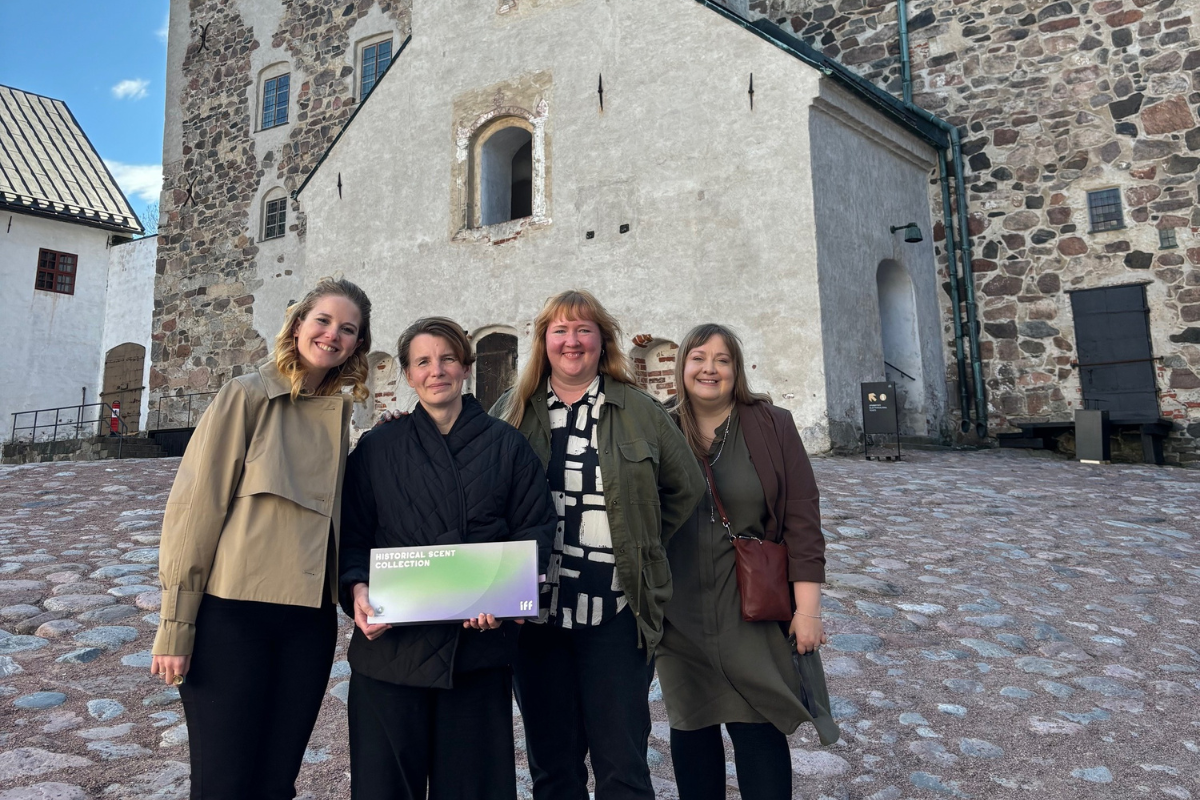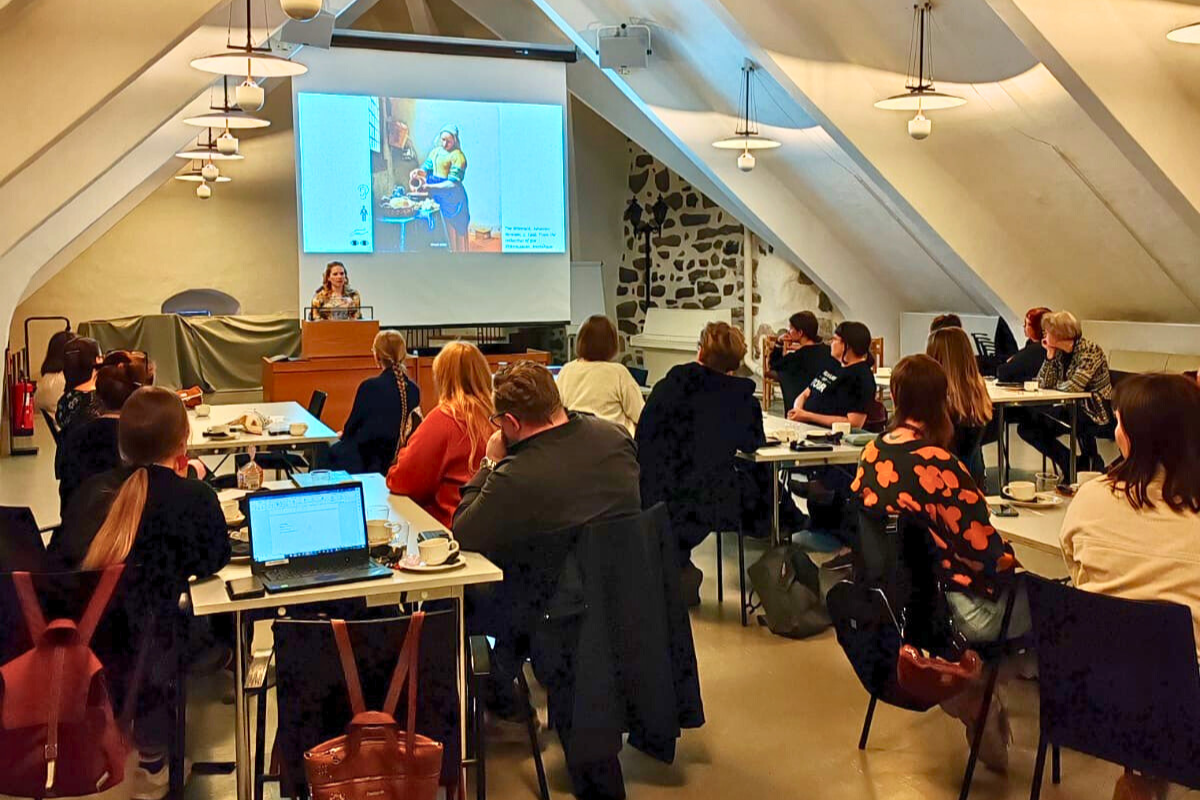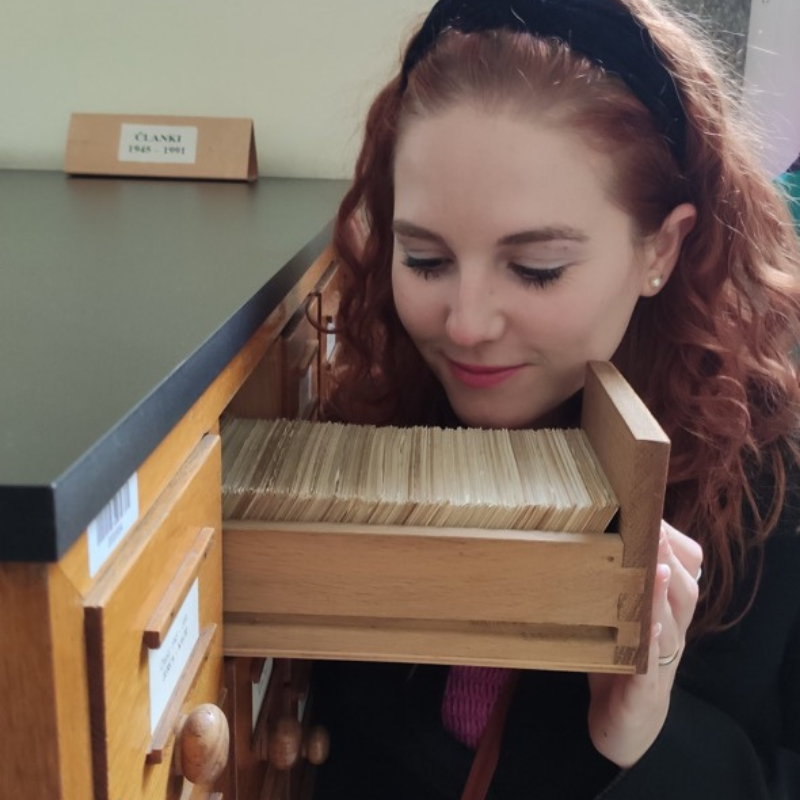A Visit to the Turku Museum Center in Finland
I kicked off the week by facilitating a three-hour, hands-on lecture. Through this, I provided the museum practitioners with opportunities to apply and engage their senses in real life. Here, discussion was key in order to better understand their concerns when using multisensory storytelling. For the rest of the week, different teams took me through their museums to talk about how they were already applying multisensory storytelling to their collections, but also to explain their plans for the future. The museums were diverse in topic from medieval times to the present day.


Experimental Scent Curation
Example from the Pharmacy Museum and the Qwensel House:




In the same room was a specially designed “scent station,” where visitors could sniff six different scents. The low fuss scent station was made of upcycled jam jars with a paper towel inside. Each towel was reapplied with essential oil as needed. Most importantly, this instance of olfactory storytelling supported worthwhile storytelling. The scents in this room were well grounded within the context of the museum’s themes and educational motives. Scents were adequately described via short and informative texts.
Example from Luostarinmäki 1827 Open Air Museum:



Another example was the tarred rope meant to represent Turku’s rich maritime history, which was hidden on the top of a cabinet in one of the galleries. Again, the significance of these scents and their connection to the themes and content of Luostarinmäki were directly highlighted in the descriptive texts that visitors could read in each room.
Hands-On Art





Main Takeaways
Firstly – as can be seen above – many museums are already successfully and efficiently applying methods of multisensory storytelling. This begs the question: are museums indeed occularcentric places or have we just not identified the plethora of museums like the Turku Museum who are already experimenting with sensory engagement?
Secondly, museum professionals want practical and easy methods of using multisensory storytelling that they can apply quickly. The quick and easy methods of olfactory storytelling applied above echo this point. However, these methods still require a bit of TLC. I found that the museum practitioners lacked information about the management of olfactory materials, such as how often to clean and replenish scented vessels. It may seem like a small detail, but it can greatly affect visitor experience.
And lastly, not all museums are made the same. This may seem obvious but it was a key insight for me, as it emphasized that challenges of multisensory storytelling can vary by the museum that is applying it. Some museums have collections they want to protect behind glass, while others have their collections displayed outside in all weather. Some museums have a team of two people, while others have a team of hundreds. The capacity of a museum can greatly affect the scope of the multisensory event.
A special thanks to Susanna Hujala, Maria Huokkola and Eveliina Tammi for the invitation and to the rest of the Turku Museum Center team for being such gracious hosts.
Are you a museum that would like to share how you use multisensory methods to engage your visitors? Feel free to reach out at sofia@olfactorycontractor.com!


